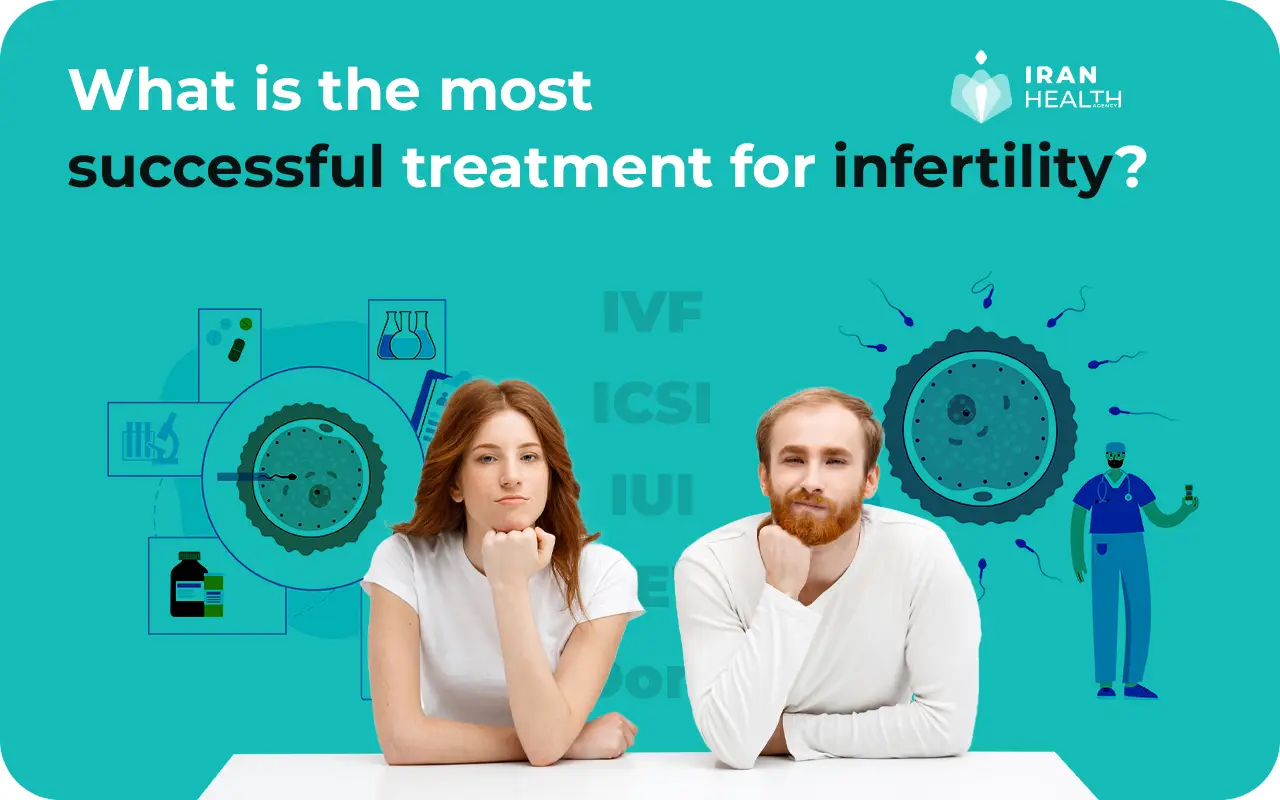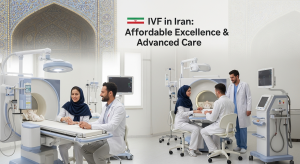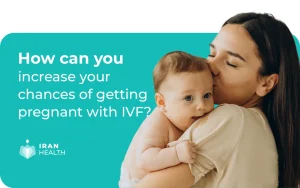The table below shows the success rate of fertility treatment options, from most successful to least successful.
| Treatment | Approximate Success Rate Per Cycle | Notes |
| IVF (In Vitro Fertilization) | 20-35% | Most successful for a wide range of fertility issues. Success rates decrease with age. |
| ICSI (Intracytoplasmic Sperm Injection) | 25-40% | Used in conjunction with IVF, it is particularly effective for male factor infertility. |
| Egg Donation | 40-50% | High success rates are especially beneficial for older women or those with poor egg quality. |
| FET (Frozen Embryo Transfer) | 30-50% | It can be higher than fresh embryo transfers in some cases. |
| IUI (Intrauterine Insemination) | 10-20% | It is less invasive and less expensive than IVF, but also less successful. |
| Fertility Medications (e.g., Clomiphene) | 5-15% | Often used as a first-line treatment for ovulation disorders. |
| Surgery (e.g., for endometriosis or blocked tubes) | Varies widely | Success depends on the specific issue being addressed. |
| Natural Methods (e.g., timing intercourse) | 1-5% per cycle | It is the least invasive but also least successful for those diagnosed with infertility. |
Therefore, the efficacy of each such method primarily depends on the fertility problems it focuses on and how effectively it can deal with multiple barriers to fertility.
Everyone should remember that it is just an illustration and the abovementioned rates. Self-selective factors, including age, state of health, a particular diagnosis of fertility, and the quality and choice of a clinic, can affect the real chance for any particular person or couple.
A fertility specialist would be better placed to advise a particular individual or couple on the most appropriate course of action based on their situation.
Let’s explain each method in more detail:
Read more: IVF in Iran
1: IVF (In Vitro Fertilization) – 20-35% success rate:
Since IVF can overcome several reproductive problems at once, it is regarded as the most successful fertility treatment. IVF can avoid numerous barriers to natural conception by managing every stage of the conception process, from egg maturation to fertilization and early embryo development. The power to overcome problems like blocked fallopian tubes or low sperm count, the use of hormonal stimulation to generate several eggs, and the ability to choose the healthiest embryos for transfer help to explain the relatively high success rate.
Read more: IVF success rate
2: ICSI (Intracytoplasmic Sperm Injection) – 25-40% success rate:
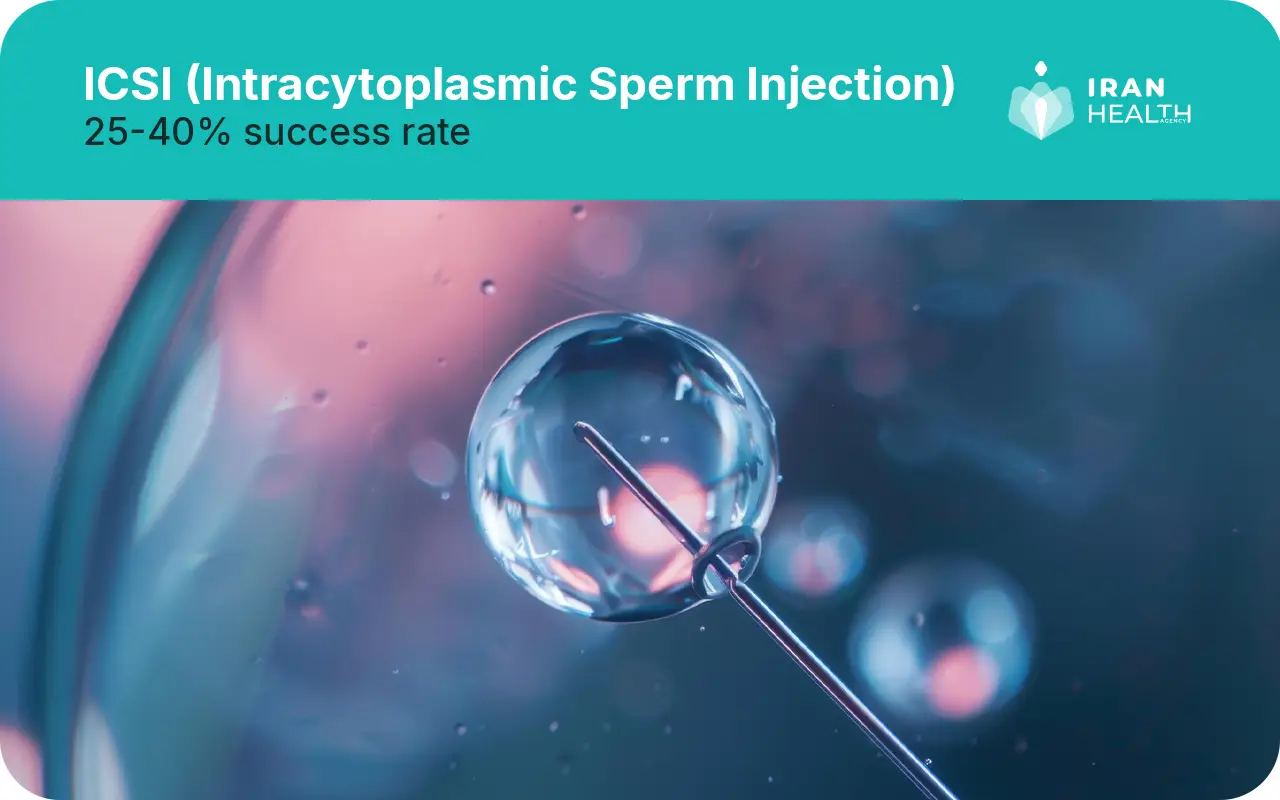
ICSI has a high success rate because it directly targets male severe factor infertility. It is often done along with IVF. Regular IVF might not work if there aren’t enough sperm, they don’t move well, or the shape of the egg isn’t right. ICSI can fix these problems by putting a single sperm directly into an egg. If infertility caused by men is the main issue, the success rate is generally higher than with regular IVF.
Read more: ICSI in Iran
3. Egg Donation – 40-50% success rate:

Among fertility procedures, egg donation boasts among the best success rates. This is mainly because the eggs originate from young, healthy donors, avoiding problems of advanced mother age or poor egg quality. The success rates of this operation result from the high quality of donor eggs and thorough screening of both eggs and recipients.
Read more: egg sperm and embryo donation
4. FET (Frozen Embryo Transfer)—30-50% success rate:
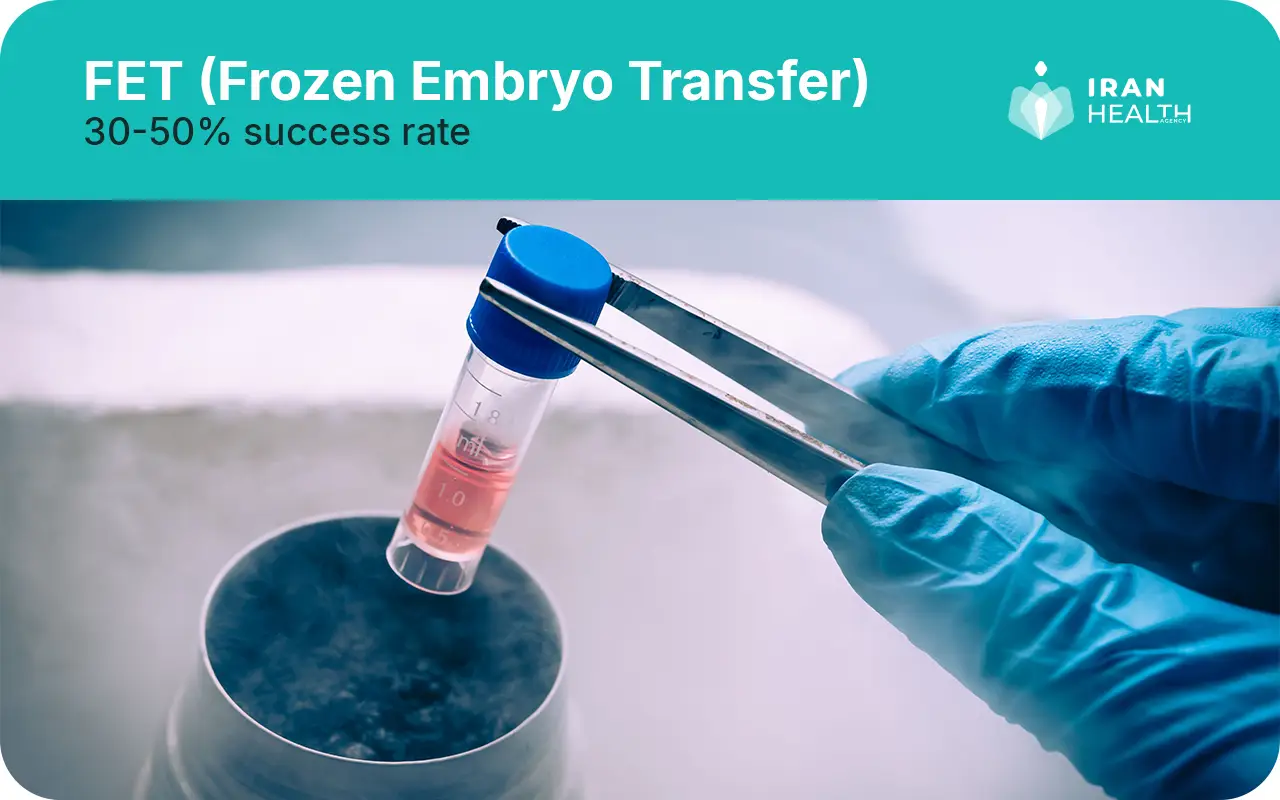
Because it enables better timing of the embryo transfer with the woman’s natural cycle, FET frequently boasts a higher success rate than fresh embryo transfers. Furthermore, the woman’s body has time to heal from the consequences of ovarian stimulation drugs applied in the first IVF round. A high success rate also results from the capacity to choose the best-quality embryos for freezing.
5. IUI (Intrauterine Insemination) – 10-20% success rate:
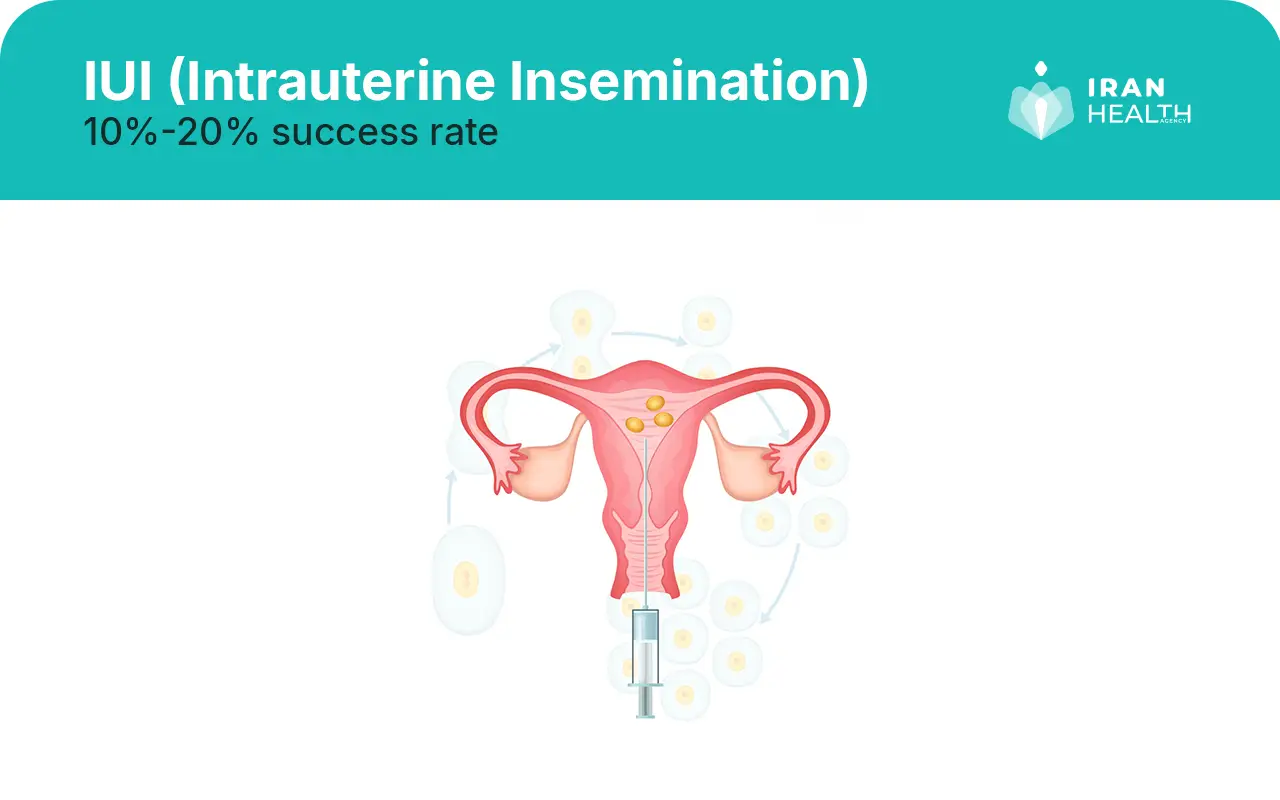
IUI has a lower success rate compared to IVF because it addresses fewer fertility issues. It primarily helps by placing sperm closer to the egg, which can overcome mild male factor infertility or cervical factor infertility. However, it doesn’t assist with issues like blocked fallopian tubes, severe male factor infertility, or egg quality problems, hence the lower success rate.
Read more: In Vitro Maturation in Iran
6. Fertility Medications – 5-15% success rate:
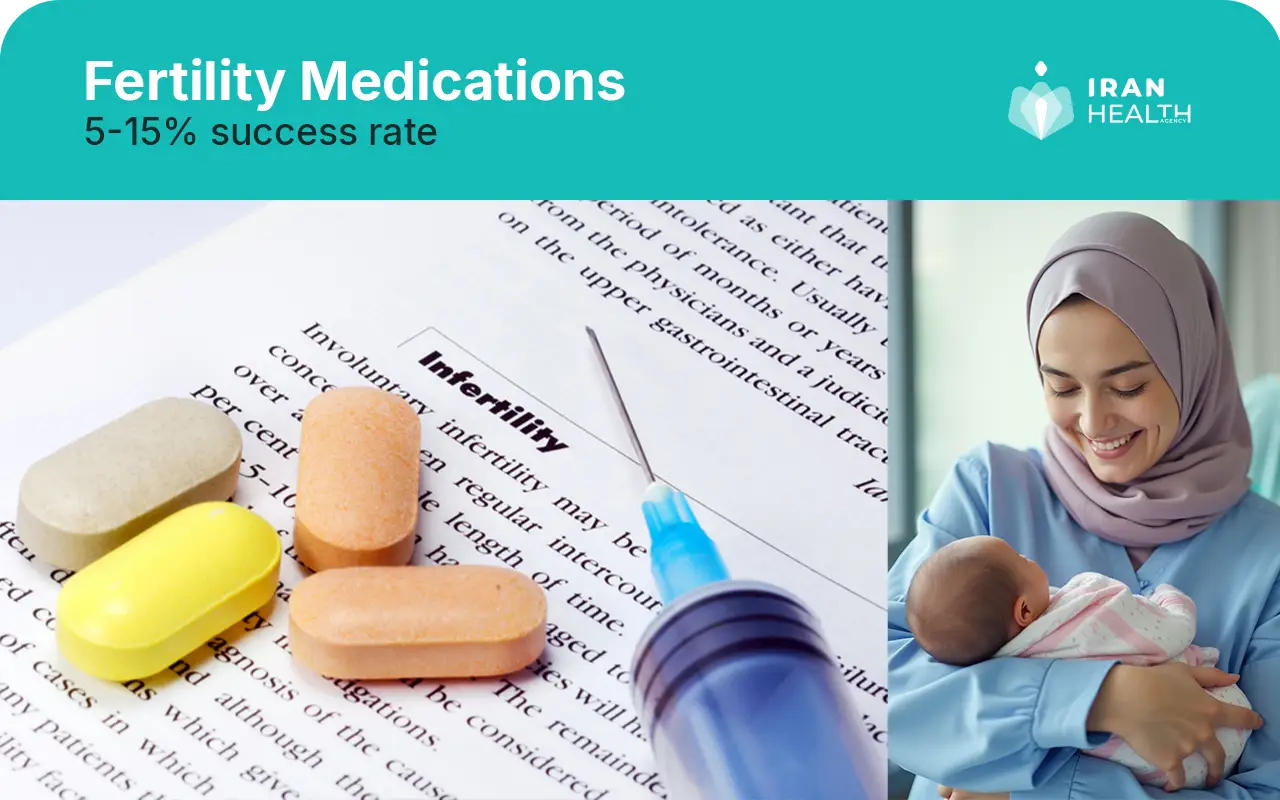
Since they mainly treat ovulation problems, fertility drugs like Clomiphene have lower success rates. For women who do not ovulate consistently they can be pretty successful. Still, they do not assist with other causes of infertility, like blocked fallopian tubes, uterine anomalies, or male factor infertility.
The fact that these fertility drugs are frequently utilized as a first-line treatment—sometimes before a comprehensive fertility workup—affects the success rate as well.
7. Surgery – Varies widely:

The success rate of surgical interventions for infertility varies greatly depending on the specific condition being treated. For instance, surgery to remove endometriosis or fibroids or to unblock fallopian tubes can be highly successful in some cases but less so in others.
The wide range in success rates is due to the diversity of conditions that may require surgical intervention and the varying severity of these conditions among patients.
Read more: Surrogacy in Iran
8. Natural Methods – 1-5% per cycle:
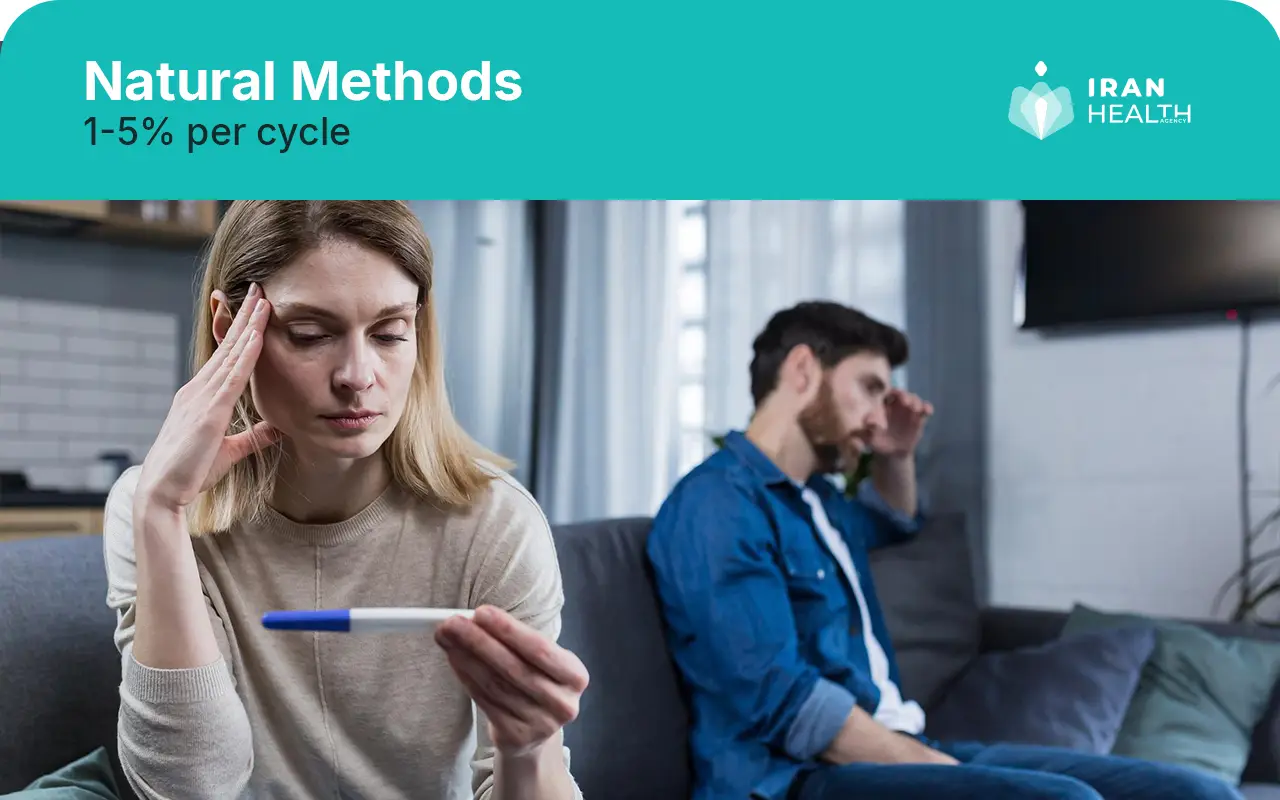
Natural methods, such as timing intercourse with ovulation, have the lowest success rates for couples diagnosed with infertility. This is because couples seeking fertility treatment often have underlying issues that prevent natural conception, which these methods don’t address. However, for couples with unexplained infertility or very mild fertility issues, these methods can occasionally be successful and are often attempted before moving on to more invasive treatments.
What is the most successful treatment for IVF? Your answers are from our doctors at Iranhealthagency!
Read more: Best IVF centers in Iran
Start Your Fertility Treatment with IranHealth
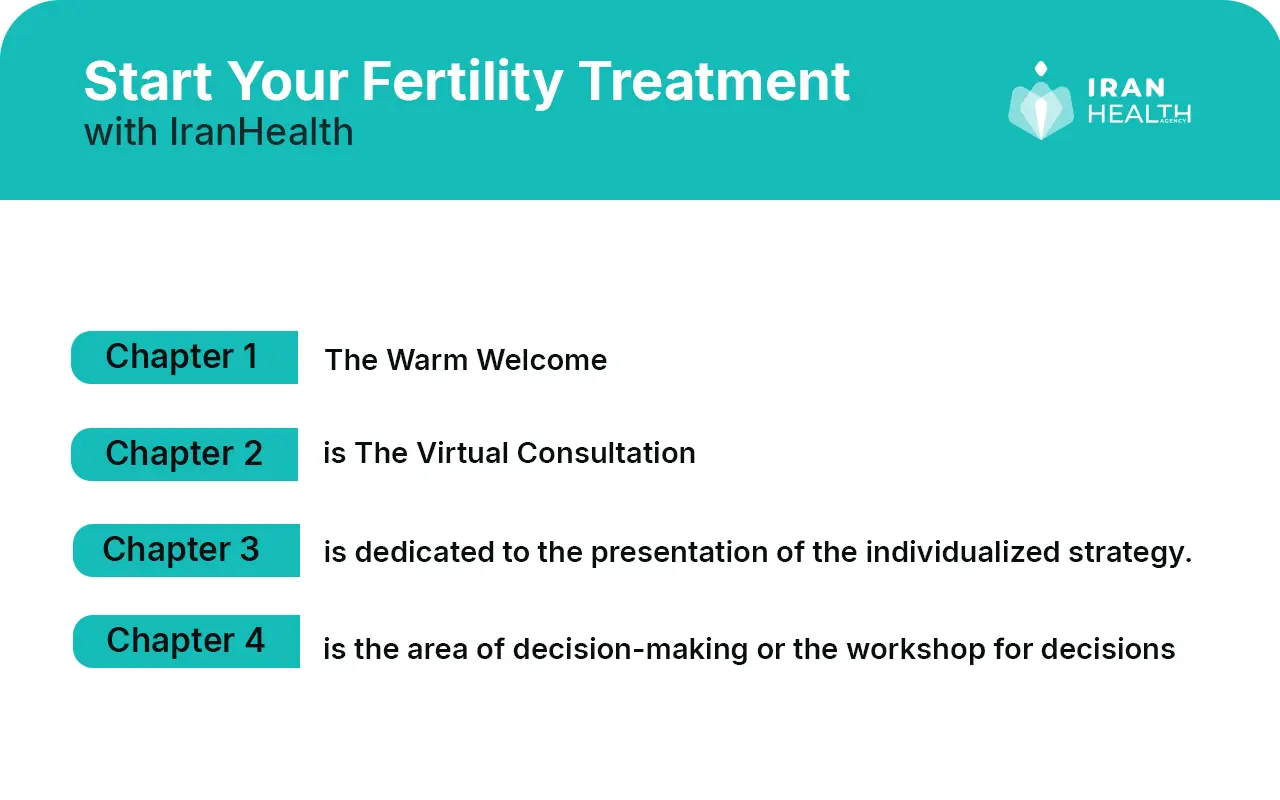
Suppose one is taken to a world where the desire to have a child in the best way possible is approached with professional assistance and advanced science. This is your journey into the world of fertility and IranHealth!
Chapter 1: The Warm Welcome
When contacting IranHealth for information, one is welcomed not by an unknown company but by your fertility specialist. The first thing we’ve noticed is Maryam’s friendly smile and encouraging voice, which make you comfortable and welcome as if you’re at her own home, even if it is a thousand miles away.
Chapter 2 is The Virtual Consultation.
Third, a videoconferencing system brings you face-to-face with your desired doctor, the best one of the fertility clinics in Iran. You get the impression of being in their office in Tehran as he listens to your story, poses questions, and takes his time to make you understand all your choices.
Chapter 3 is dedicated to the presentation of the individualized strategy.
Make a treatment plan that fits your needs after your virtual session. But this isn’t just a medical record; it’s also an interactive, beautiful multimedia eBook. You can see as you swipe through the pages on your computer.
Chapter 4 is the area of decision-making or the workshop for decisions.
When you go through IranHealth, we don’t just provide you with choices; we guide you through your decision. You are welcomed to an engaging online session surrounded by other couples with such dilemmas. With the help of a moderator and involving doctors, you discuss cause questions and make decisions in different cases aimed at helping you make a choice.
